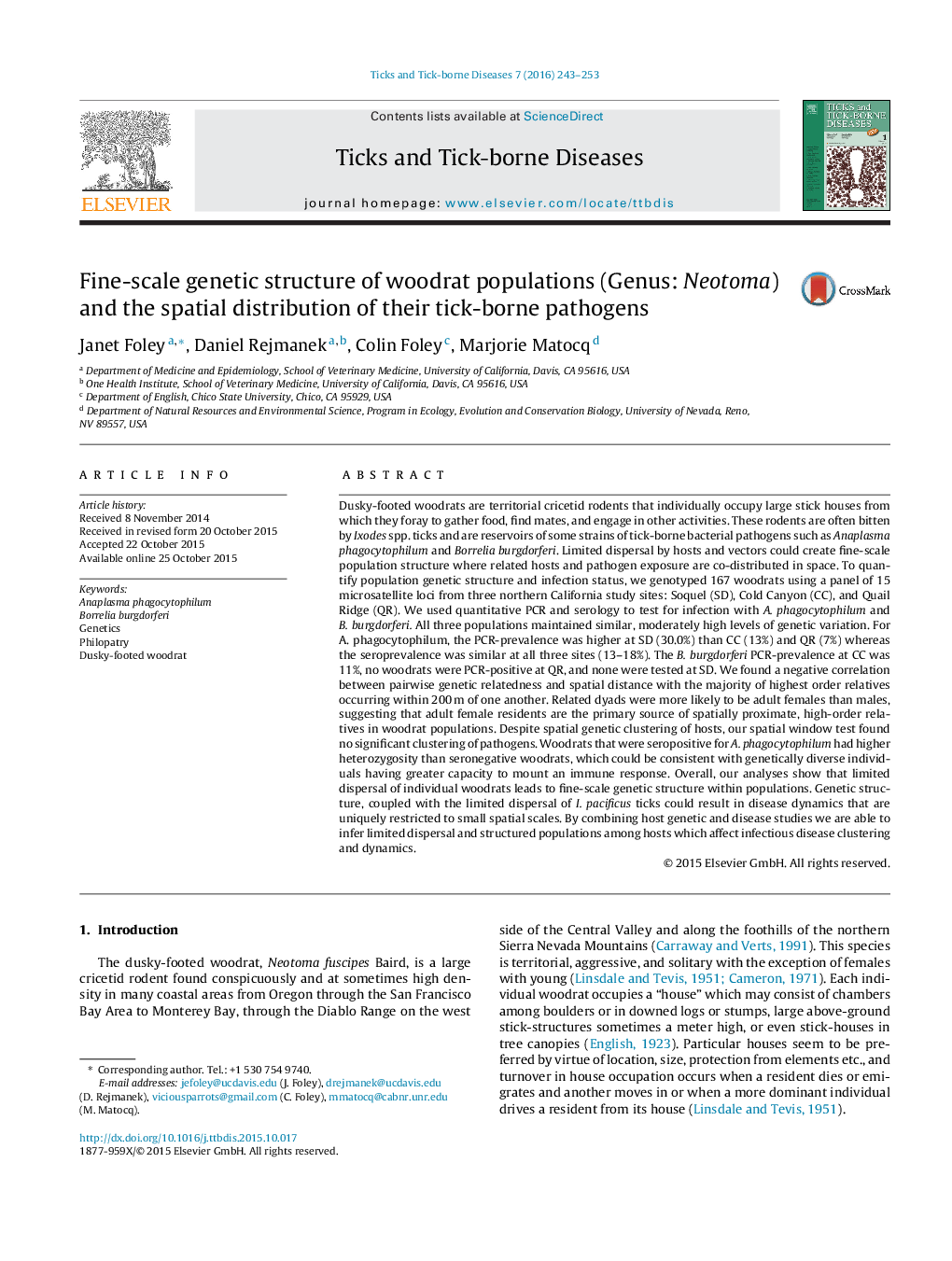| Article ID | Journal | Published Year | Pages | File Type |
|---|---|---|---|---|
| 5807071 | Ticks and Tick-borne Diseases | 2016 | 11 Pages |
Dusky-footed woodrats are territorial cricetid rodents that individually occupy large stick houses from which they foray to gather food, find mates, and engage in other activities. These rodents are often bitten by Ixodes spp. ticks and are reservoirs of some strains of tick-borne bacterial pathogens such as Anaplasma phagocytophilum and Borrelia burgdorferi. Limited dispersal by hosts and vectors could create fine-scale population structure where related hosts and pathogen exposure are co-distributed in space. To quantify population genetic structure and infection status, we genotyped 167 woodrats using a panel of 15 microsatellite loci from three northern California study sites: Soquel (SD), Cold Canyon (CC), and Quail Ridge (QR). We used quantitative PCR and serology to test for infection with A. phagocytophilum and B. burgdorferi. All three populations maintained similar, moderately high levels of genetic variation. For A. phagocytophilum, the PCR-prevalence was higher at SD (30.0%) than CC (13%) and QR (7%) whereas the seroprevalence was similar at all three sites (13–18%). The B. burgdorferi PCR-prevalence at CC was 11%, no woodrats were PCR-positive at QR, and none were tested at SD. We found a negative correlation between pairwise genetic relatedness and spatial distance with the majority of highest order relatives occurring within 200 m of one another. Related dyads were more likely to be adult females than males, suggesting that adult female residents are the primary source of spatially proximate, high-order relatives in woodrat populations. Despite spatial genetic clustering of hosts, our spatial window test found no significant clustering of pathogens. Woodrats that were seropositive for A. phagocytophilum had higher heterozygosity than seronegative woodrats, which could be consistent with genetically diverse individuals having greater capacity to mount an immune response. Overall, our analyses show that limited dispersal of individual woodrats leads to fine-scale genetic structure within populations. Genetic structure, coupled with the limited dispersal of I. pacificus ticks could result in disease dynamics that are uniquely restricted to small spatial scales. By combining host genetic and disease studies we are able to infer limited dispersal and structured populations among hosts which affect infectious disease clustering and dynamics.
